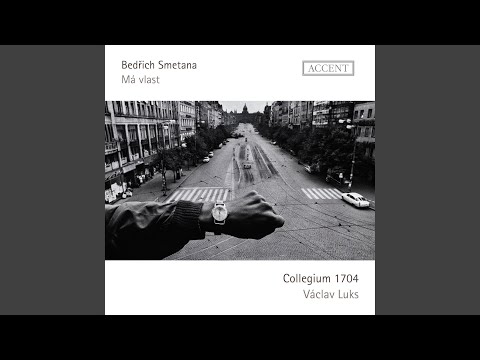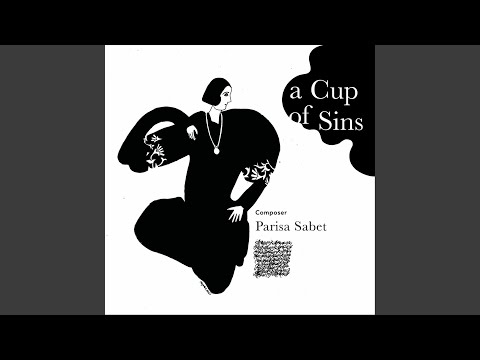- Chineke! Orchestra, Elena Urioste, Kevin John Edusei: “Coleridge-Taylor” (Decca)
- Collegium 1704, Václav Luks: Smetana “Má vlast” (Accent)
- Parisa Sabet: “A Cup of Sins” (Redshift Music)
Among the cameos in Singing Like Germans: Black Musicians in the Land of Bach, Beethoven and Brahms, Kira Thurman’s jam-packed history of Black performers in German-speaking Europe, is Claudio Brindis de Salas Garrido. Thurman describes the virtuoso violinist as “a mirror reflecting German conversations about Black masculine musicality in the Kaiserreich,” or the German Empire. Brindis de Salas’s signature recital-closer was Heinrich Wilhelm Ernst’s Rossini-based “Othello Fantasy.” On the one hand, the selection isn’t out of the ordinary: Like many finales, it’s a showcase of virtuosic feats that ends the evening with a dazzling, victorious flourish. But, as Thurman points out, Brindis de Salas “picking a work on the theme of Shakespeare’s ‘Othello’ might also suggest an awareness of his own Black masculinity. He might have chosen it to capitalize on how audiences perceived him. Or it might have been a defiant gesture, a wink, or a nod.” Either way, the choice doesn’t seem incidental or haphazard: In Brindis de Salas’s time, the figure of Othello was “one of the most recognizable and potentially uplifting symbols of Black masculinity.”
Unspoken in this section—but a prevalent theme throughout Thurman’s book—is who was controlling the image of Black masculinity in Europe at the time. Even “Othello,” in almost every major iteration from Shakespeare to Verdi, was a drama controlled and shaped by white authors. Paul Robeson said that Shakespeare “seemed to foreshadow and understand many of the problems that have arisen in our world—and, perhaps, were present then,” and defended the title role as one that offered a rare “dignity for the Negro actor.” Yet, decades before Robeson took the stage as the first Black Othello in the United States, its cultural currency was a matter of philosophical consternation to W.E. B. Du Bois. “I sit with Shakespeare and he winces not,” Du Bois writes in The Souls of Black Folk. Elaborating on this, the contemporary scholar Ambereen Dadabhoy writes: “Even as Shakespeare becomes a metric through which Du Bois can exhibit his personal intelligence, capability, artistry, and humanity, and that of all Black men and women, [there is still] the white cultural investment in Shakespeare that would proscribe his work from the Black imaginary.”
Du Bois was a hero to British composer Samuel Coleridge-Taylor, who met the historian and activist during his tours to the United States at the turn of the century. Du Bois had written The Souls of Black Folk in 1903, meaning that, by the time Coleridge-Taylor was composing incidental music for a West End production of Shakespeare’s “Othello” in 1912 (the final year of the composer’s life), he would likely have read his friend and fellow Pan-Africanist’s thoughts on Shakespeare. It was also a pivotal time for a Black composer to be working on that particular play. Brindis de Salas had died the year before, impoverished in Buenos Aires. It had been nearly a century since Ira Aldridge became the first Black actor to play Othello in London, and just under two decades before Robeson would become the second to do so.
The latest from VAN, delivered straight to your inbox
And, while the company Coleridge-Taylor was writing for was prestigious enough, the production itself seems to have been divisive. W. C. Berwick Sayers, Coleridge-Taylor’s friend, described it as a triumph. Ernest Thesiger, who played Rodrigo opposite the theater’s impresario, Sir Herbert Tree, as the Moor, said it was not one of the actor’s better performances: “I don’t think he ever took it very seriously. He used to stride about the stage making strange jealous noises, which sounded like the mooing of a cow in calf.”
According to Sayers, Coleridge-Taylor himself was enthusiastic about the project, and I wish there was more documentation in his 1915 biography, Samuel Coleridge-Taylor, Musician: His Life and Letters, about this seemingly minor yet poetically significant gig in the composer’s final year. The son of a Sierra Leonean father and an English mother, Coleridge-Taylor’s “distinctive appearance and his celebrity made him a center of interest wherever he went,” Sayers writes—devoting a large amount of his recollections of Coleridge-Taylor to the role that race played in his friend’s public and personal life. It’s possible that the significance of working on music for “Othello” as a Black composer never came up for him, at least in conversation (his biggest consternation, according to his letters, was setting the children’s intermezzo). But I have to imagine that the parallels between Shakespeare’s text and his own life at least crossed his mind.
At first blush, the “Othello” suite that grew out of Coleridge-Taylor’s contribution to Tree’s production seems sparse and incidental to the core focus of his larger body of work—music that, in his own words, sought to do for African folk music “what Brahms has done for Hungarian folk music, Dvořák for the Bohemian, and Grieg for the Norwegian.” It’s not one of his most famous works and, out of context, it doesn’t necessarily sound “Othello”-esque. The five-movement piece, which clocks in at a slim 15 minutes, begins with a blazing dance that bears traces of the orientalized cousins of “Othello,” Bizet’s “Carmen” and Saint-Saëns’s “Samson et Dalila.” The children’s intermezzo hints occasionally at Strauss’s “Rosenkavalier” waltzes. The highlight is his setting of Desdemona’s “Willow Song,” with its melancholy English folk hues and slightly acerbic edge, but overall the suite teems more with pageantry than tragedy. This, Sayers suggests, was what Tree was going for with his staging, which opened on April 10, 1912 (which, in keeping with the theme of pageantry over tragedy, was the same day that the Titanic left Southampton).
But all of these subsurface unifying details make “Othello” a keen dramaturgical choice to open Chineke!’s new two-disc set devoted to Coleridge-Taylor. The question of the composer’s identity is as multifaceted and footnoted as the zeitgeist in which he worked. He was a biracial man who devoted his short life to an artform arbitrated by whites. He was Black, but also rejected aspects of Black popular culture, eschewing ragtime for a late-Romantic language that earned him admiration from Joseph Joachim and, among U.S. orchestras, the moniker “the Black Mahler.” (Classical music is nothing if not blandly predictable with its nicknames.) And, while some of his most famous works are based on the works of American poet Henry Wadsworth Longfellow, Coleridge-Taylor was also unabashedly English. That comes through with abundant clarity in Chineke!’s reading of the moody, Brontë-esque “Sussex Landscape.” By the time we get to his “African Suite”—arranged here for orchestra from its original score for piano—we’re not hearing him solely as an African composer. We’re hearing him in all of his multitudes.
For Coleridge-Taylor, the theme of place as set in his music—be it the terrain of the country where he was born and grew up, or the landscape of a country where he never set foot but remained part and parcel of his psyche—wasn’t a question of nationalism. Considering the juxtaposition of the Victorian-era Scramble for Africa happening in the background of his childhood versus his espousal of the Pan-Africanism movement and its unification of all people of African descent across the diaspora, the argument can be made that he was attempting to work beyond nationality. Several decades before Coleridge-Taylor’s birth and 800 miles east of his home in London, Czech composer Bedřich Smetana was faced with the question of identity from a different vantage point. The modern-day Czech Republic was grappling with shifting borders and cultural identities under Habsburg rule. Born near the dividing line between the regions of Bohemia and Moravia, Smetana grew up speaking German as his first language, but as a young man in Prague in 1848, he found himself defending the barricade on the Charles Bridge with his fellow revolutionaries against Austrian rule. Ironically, his true introduction to nationalism came while he was living in Sweden.
Not that any of these conflating or conflicting identities have overshadowed the myth of Smetana. His frequent librettist, Eliška Krásnohorská, burned many of the composer’s letters to her that showed off his poor Czech grammar. In preparing the composer’s scores for publication, the music critic Václav Juda Novotný altered harmonies to sound more “Czech.” Musicologist Otakar Hostinský fueled a culture war between Smetana and his contemporary (and fellow Coleridge-Taylor hero) Antonín Dvořák, in support of the former as the exemplar of national musical culture. All of this tends to overshadow Smetana’s most famous work, the symphonic poem “Má vlast.” Much like Beethoven’s Ninth, it’s a work that’s easily susceptible to political manipulation on all sides. Thanks to Terrence Malick, the “Vltava” section has become a form of lazy shorthand to signal artistic depth. Thanks to the Czech tourism industry, the work has inversely become the equivalent of hold music. “In secure times, its meaning seems almost like a burden,” Jakub Hrůša told VAN in 2017, adding that he loves to conduct the work, but will hesitate to do so if the occasion to play the piece is “too ordinary.”
There’s little ordinary to be had in hearing “Má vlast” in a Prague Spring performance, given in a concert hall on the banks of the Vltava and a programmatic mainstay of the festival (which opens every year on the anniversary of Smetana’s death). There was even less ordinary in the May 12, 2021 performance which opened the 76th Prague Spring—a return to concert halls for many of the musicians and limited audience members. For the occasion, Václav Luks led Collegium 1704 in a performance built on period instruments and performance practices. This switch is immediately apparent in the warm garnet tones of the harps and more woodsy hues of the woodwinds. There’s a slight burnished patina in the brass of “Vyšehrad,” depicting the castle at the center of this tone poem as a fortress—not a Disney palace—underscoring it with some “Rheingold”-esque shadings. The moments in which the trumpets ebb and flow are elastic and laconic, colors I’ve never heard before in the minutes leading up to the castle’s destruction. Similarly, the flutes refuse to milk the opening of “Vltava,” running crisply and unceremoniously as two streams into a larger current. The effect is akin to a reading of Shakespeare in which the lines are delivered as if they are modern dialogue in lieu of iambic verse; Luks and Collegium free themselves from the burden of meaning and deliver Smetana’s work vitally fresh and without any of its attendant historical or political baggage.
“This is something Iranian. I have no idea what it is, but I know this interval is home,” Niloufar Nourbakhsh told me last month as part of a larger interview for VAN with several members of the Iranian Female Composers Association. “This interval is home” is an idea that’s stuck with me in the weeks since we spoke. It’s a sentiment that, I imagine, would resonate for both Coleridge-Taylor and Smetana—and Iranian-Canadian composer Parisa Sabet, whose debut collection, “A Cup of Sins,” offers a spectrum of connections and influences. “Shurangiz” sets the album up for this multiplicity, initially paying homage to fellow Iranian composer Ali Ghamsari before developing into a panoply of meter and color that sounds as much like something from the sets of NOW Ensemble or yMusic, the line of melody volleyed across a continuously-shifting rhythmic ground.
This idea of musical translation feels even more literal in “Geyrani,” a violin solo (here fielded by Matthias McIntire) inspired by the kamancheh improvisations of Kayhan Kalhor. The idea isn’t to make the violin sound like the kamancheh. It instead takes many of the core elements of the kamancheh and adapts them to the violin. The kamancheh’s tighter, archer sound is replicated in the violin’s upper register. Microtones straddle the line between Persian folk music and Bartók’s Violin Sonata. It’s a work rife with reference and context lingering just out of sight, their threads begging to be tugged. ¶
Subscribers keep VAN running!
VAN is proud to be an independent classical music magazine thanks to our subscribers. For just over 10 cents a day, you can enjoy unlimited access to over 875 articles in our archives—and get new ones delivered straight to your inbox each week.
Not ready to commit to a full year?
You can test-drive VAN for one month for the price of a coffee.





